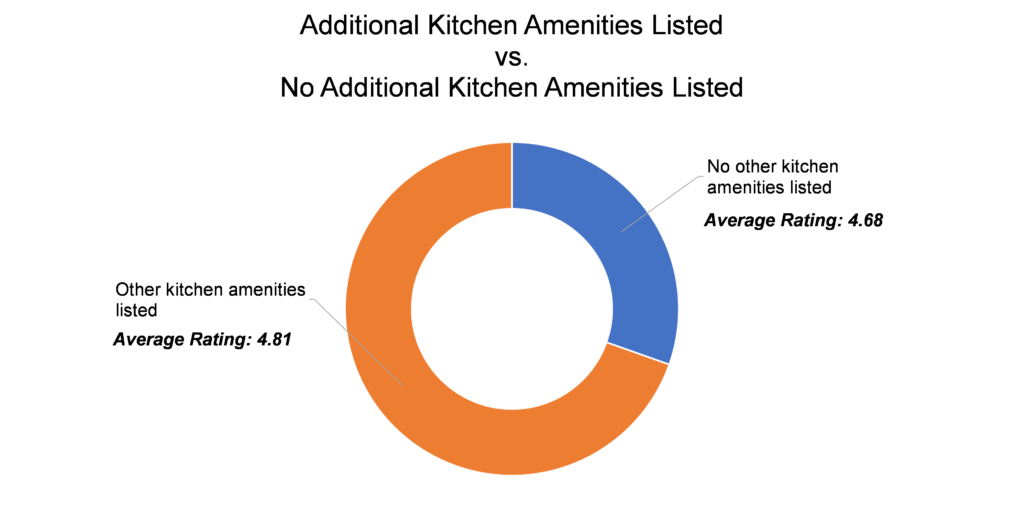Introduction to the analysis
For the analysis we’ll use a dataset of 250k listings from the US as of April 2020. Data was sourced from Inside Airbnb, an activist project with the objective to provide data that quantifies the impact of short-term rentals on housing and residential communities.
First, we’ll exclude all Airbnb listings without a rating. New or inactive listings won’t have an overall rating to include in our analysis. This drops the number of listings in the subset down to 204k. Next, we’ll count the number of amenities offered in each listing. Finally, we’ll group listings by number of amenities and calculate the average overall rating by group. The output of this is below.

From this we can see there is a near perfect logarithmic correlation between number of amenities listed and overall rating. A logarithmic correlation simply means that we can draw a curved line through the data points.
For our purposes, this means there is a diminishing return in the effect that listing amenities has on the overall rating. Going from 5 amenities listed to 15 takes the average rating from 4.48 to 4.66 (+0.18 increase). However, going from 15 amenities to 25 amenities only takes the average rating from 4.66 to 4.74 (+0.08 increase). The trend continues with more amenities added. The more amenities added, the smaller (but still positive) impact it will have on the overall rating.
How many amenities should hosts include on Airbnb
There is no perfect number. However, the analysis suggests hosts should list as many amenities as they honestly can. It’s important to remember that accuracy is one of the biggest factors influencing the overall rating. Above all else, a space should meet the guest’s expectations and match how it was described. For this reason, it’s important to be accurate when listing amenities. Hosts should keep their list of amenities up to date and account for any changes. For example, if something is broken or otherwise unavailable this should be reflected in the listing.
We can also consider the importance of accuracy and expectations another way. We can say it’s in a host’s best interest to list every amenity available, no matter how small. Giving as much detail as possible to prospective guests can only help them set appropriate expectations for their stay.
Listing a kitchen on Airbnb
We can demonstrate this with a concrete example. Hosts on Airbnb can list a kitchen as amenity. They can also be more specific by listing a refrigerator, dishes and silverware, cooking basics, stove, microwave, coffee maker, oven and/or dishwasher.
Of the 204k listings in the dataset, 182k listed a kitchen (89%). However, of those listings that included a kitchen, 55k did not include any of the above mentioned more specific kitchen amenities. Those 55k listings, as expected, have lower ratings on average than than the more detailed listings.

Taking the guest’s perspective, we can see how this happens. A guest books a place because it has a kitchen. A guest will then assume what’s included if no detail is provided. Upon arrival, they find the kitchen is not as expected, which leads to a negative experience. In turn, this can lead to a bad review and a bad rating. This can avoided by being as exhaustive as possible when listing amenities.
Key takeaways
- Analysis shows a positive correlation between number of amenities listed and overall rating
- Hosts should list as many amenities as they can while still being honest and accurate

